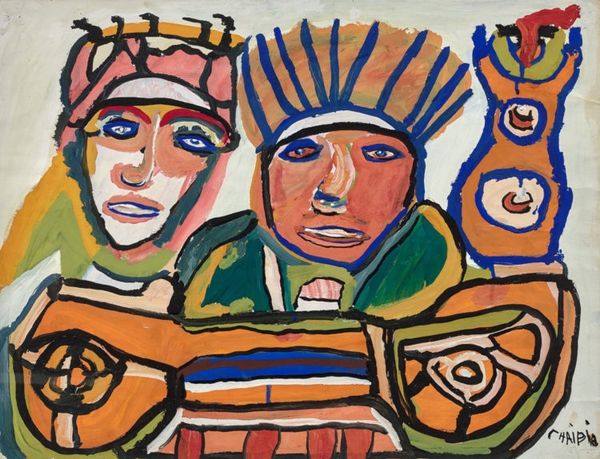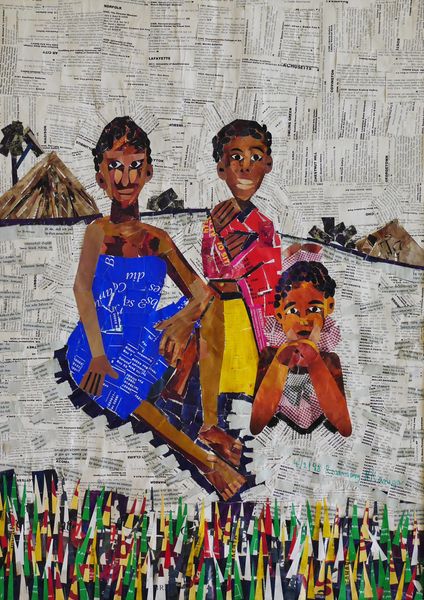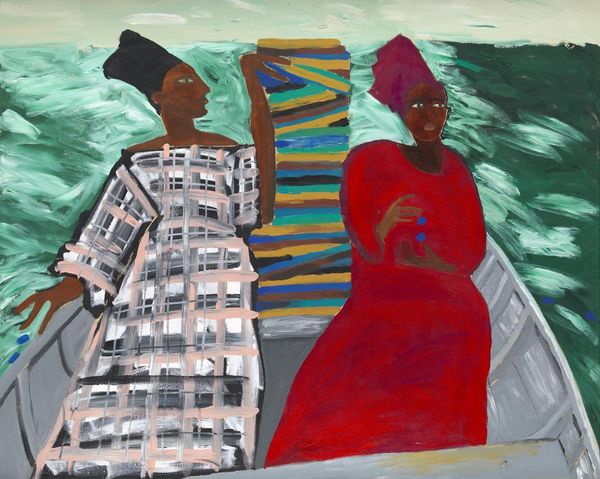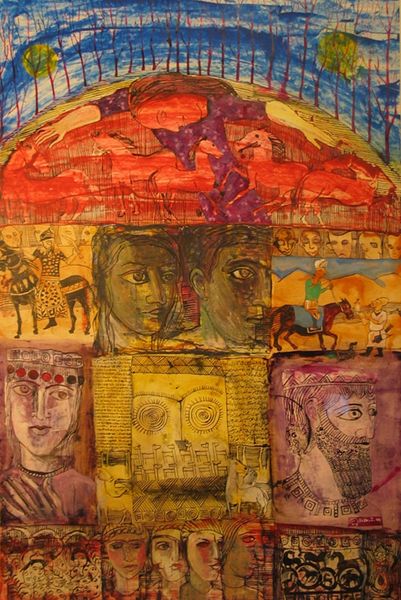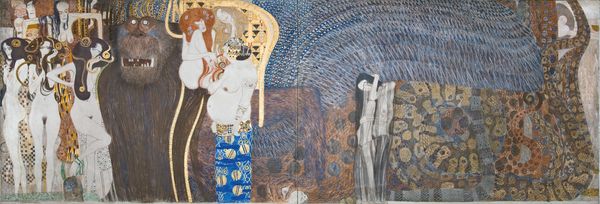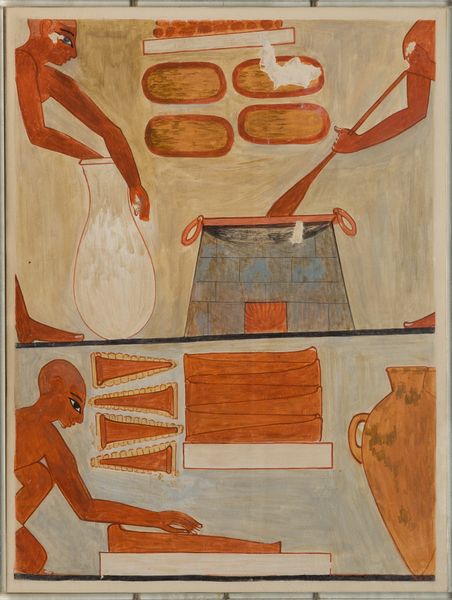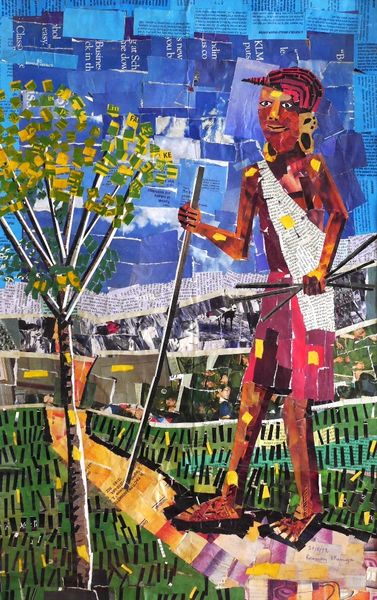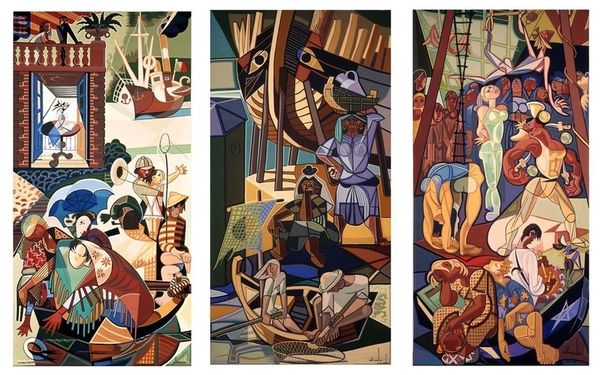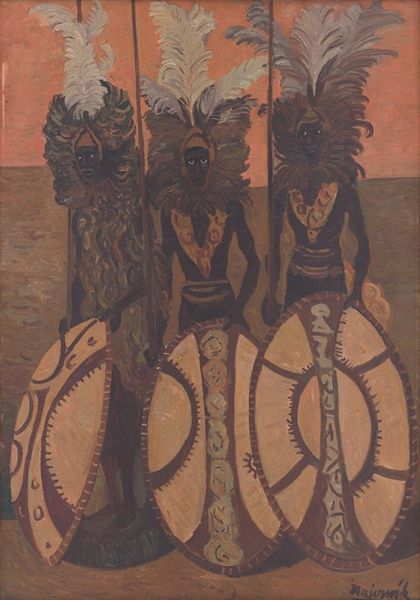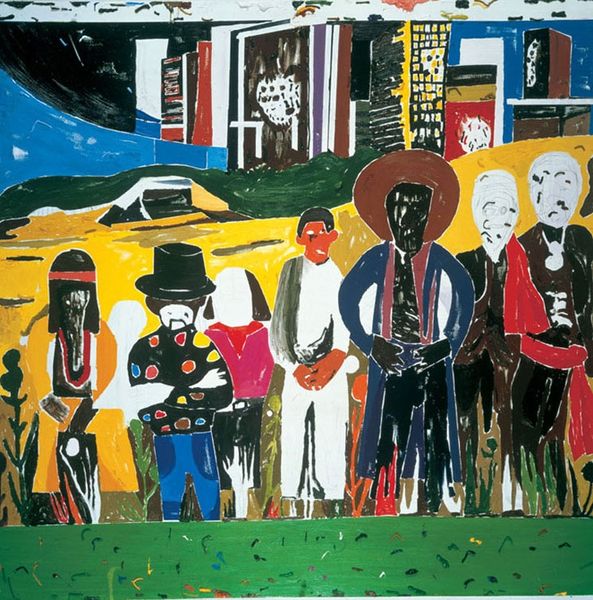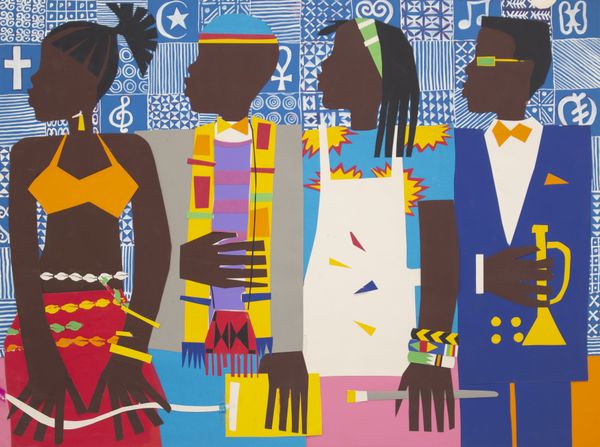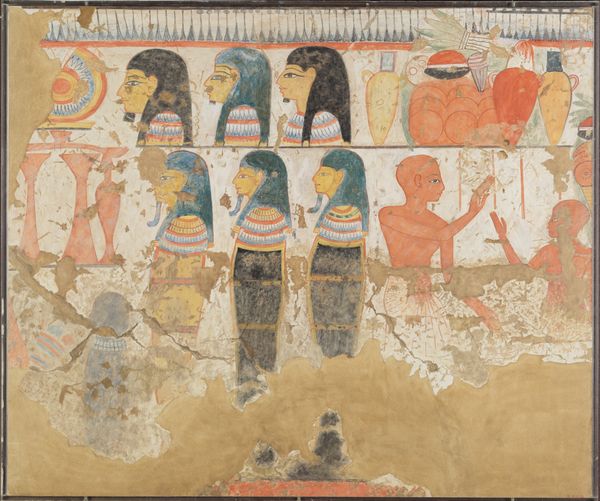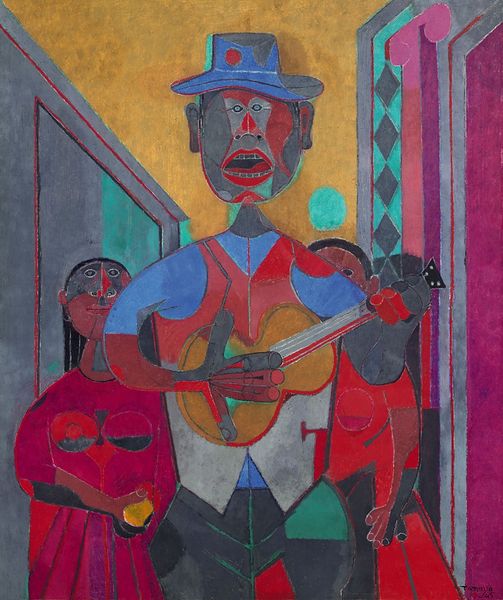
mixed-media, collage
#
portrait
#
mixed-media
#
collage
#
narrative-art
#
graffiti art
#
street art
#
mixed mediaart
#
figuration
#
mural art
#
painting art
#
mixed media
Copyright: Rosemary Karuga,Fair Use
Editor: This mixed media collage is “Untitled” by Rosemary Karuga, created in 1998. It's constructed with an amazing assortment of materials; newsprint, magazine scraps, really everything seems to be fair game here. I'm struck by how she builds up these figures from what seems like discarded material. What do you see in this work? Curator: For me, the power lies in Karuga's conscious use of discarded materials. Newsprint and magazine fragments – these aren’t neutral surfaces. They carry their own histories, embedded narratives of consumption and daily life. Karuga takes these mass-produced materials, literally the waste of a society, and transforms them through meticulous labor into dignified portraits. Editor: So, the *process* of making is as important as the *image*? Curator: Absolutely. The work challenges traditional notions of high art by embracing 'low' materials and craft techniques. It speaks to the ingenuity and resourcefulness often found in communities with limited access to traditional art supplies. This labor-intensive method elevates the everyday and subverts our expectations about what art *should* be made of. It prompts us to question: who decides what has value, and why? Editor: The way you describe it shifts my perception entirely. I was initially drawn to the figures, but now I see how much the meaning is embedded in *how* they are made. Curator: Consider the social context. This was made in 1998, after a long period of social and economic changes in Kenya. The collage perhaps becomes a commentary on consumption, waste, and the ability of people to re-imagine and remake themselves amidst those pressures. Editor: So, Karuga is engaging in a material dialogue, transforming waste into a representation of the culture that produced it. That gives the “Untitled” artwork much greater weight. Curator: Exactly. She invites us to reflect on the means of production, the act of making, and the lives intertwined with these materials.
Comments
No comments
Be the first to comment and join the conversation on the ultimate creative platform.

